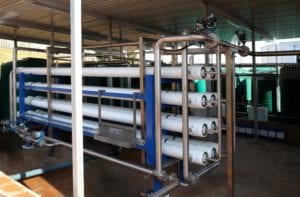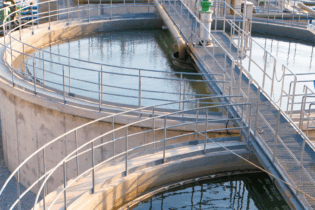Growing populations and rapid urbanisation are increasingly adding pressure to the country’s already constrained wastewater treatment works.
With residential developments encroaching ever closer on wastewater treatment works and water demand rapidly growing, QFS has proven solutions that can lift the burden on both the plants and those people affected.Wastewater reuse
The reuse of wastewater has been a solution in water-scarce areas for decades, and are proving all the more viable with new technology developments. Here, QFS has many reference projects that prove its ability to deliver safe and sustainable water reuse solutions to the public. The most notable is South Africa’s first-ever water reuse facility in Beaufort West, which produces 2.3 MLD of SANS Class 1 standard drinking water. The plant is configured with Memcor® ultrafiltration membranes to remove all total suspended solids, and a two-stage reverse osmosis plant to remove other smaller impurities and toxicants from the water. Finally, to ensure that the water is safe for human consumption, the water is treated with ultraviolet light and hydrogen peroxide – a step known as advanced oxidation. With this technology, this water-sparse Karoo town is able to augment its water supply for generations to come. Similarly, QFS has designed, engineered, manufactured, installed and commissioned a 1.5 MLD reuse plant at De Doorns in the Cape Winelands to help save water. Secondary municipal wastewater is treated to produce irrigation water for the local farmers, helping to free up source water for the rapidly growing De Doorns community. The process uses ultrafiltration, ultraviolet disinfection and a granular activated carbon. The plant was completed in 2017. The Ballito community in KwaZulu-Natal has also received a reuse solution from QFS after drought resulted in a shortage of drinking water. Using ultrafiltration and reverse osmosis, QFS designed, engineered, manufactured, installed and commissioned a 5 MLD plant, providing drinking water to the community and alleviating the drought stress.Compact wastewater treatment
Available land is becoming a rarer commodity, which we can ill-afford to lose to conventional wastewater treatment plants. QFS, with its partner Evoqua®, can provide internationally proven wastewater technology on a much smaller scale.Called a membrane bioreactor (MBR) system, MemPulse® MBR and Xpress® MBR are unique wastewater treatment processes that combine an activated sludge biological treatment process with an innovative membrane filtration system.
MBR eliminates the need for large clarifiers and sand filters, improves effluent water quality (ideal for reuse applications), allows for plant expansions in the same footprint, and uses a smaller biological process.







